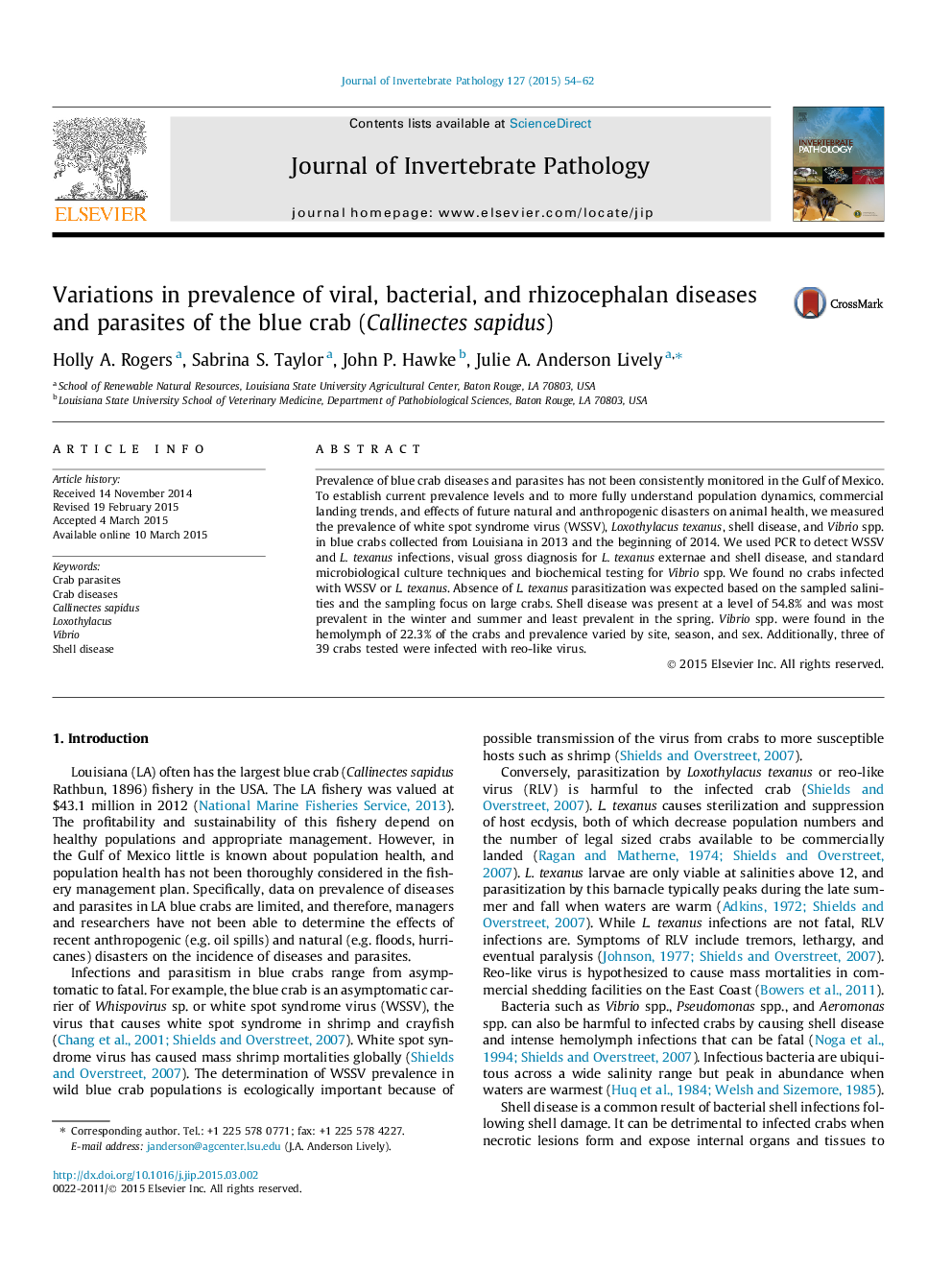| Article ID | Journal | Published Year | Pages | File Type |
|---|---|---|---|---|
| 4557640 | Journal of Invertebrate Pathology | 2015 | 9 Pages |
•We established current prevalence rates for blue crab diseases and parasites.•We found 0% prevalence of Loxothylacus texanus and of white spot virus.•Half of the crabs collected had shell disease, which was primarily non-necrotic.•Twenty-two percent of crabs had Vibrio spp. infections in the hemolymph.•Reo-like virus was found in Louisiana wild blue crabs.
Prevalence of blue crab diseases and parasites has not been consistently monitored in the Gulf of Mexico. To establish current prevalence levels and to more fully understand population dynamics, commercial landing trends, and effects of future natural and anthropogenic disasters on animal health, we measured the prevalence of white spot syndrome virus (WSSV), Loxothylacus texanus, shell disease, and Vibrio spp. in blue crabs collected from Louisiana in 2013 and the beginning of 2014. We used PCR to detect WSSV and L. texanus infections, visual gross diagnosis for L. texanus externae and shell disease, and standard microbiological culture techniques and biochemical testing for Vibrio spp. We found no crabs infected with WSSV or L. texanus. Absence of L. texanus parasitization was expected based on the sampled salinities and the sampling focus on large crabs. Shell disease was present at a level of 54.8% and was most prevalent in the winter and summer and least prevalent in the spring. Vibrio spp. were found in the hemolymph of 22.3% of the crabs and prevalence varied by site, season, and sex. Additionally, three of 39 crabs tested were infected with reo-like virus.
Graphical abstractFigure optionsDownload full-size imageDownload as PowerPoint slide
